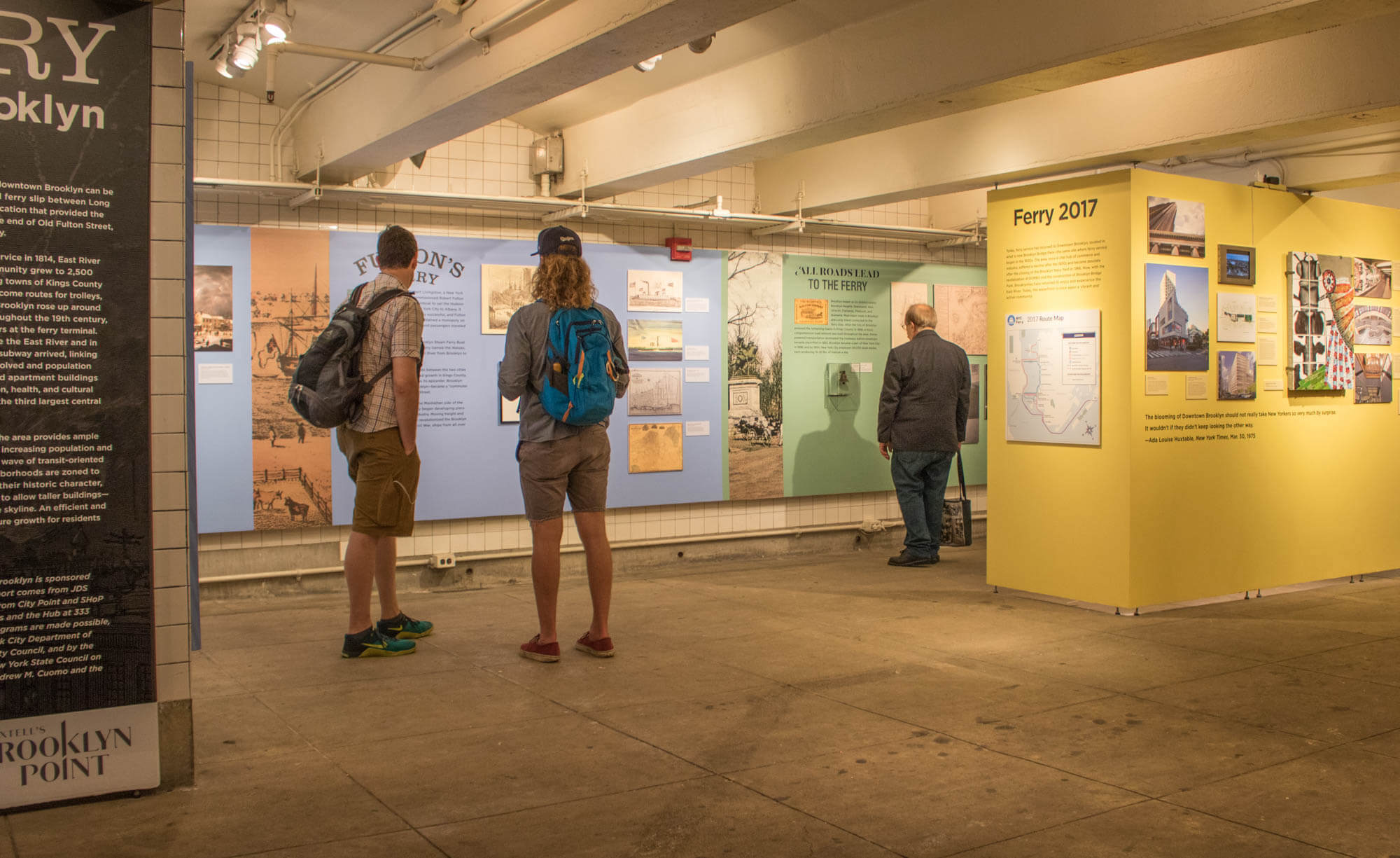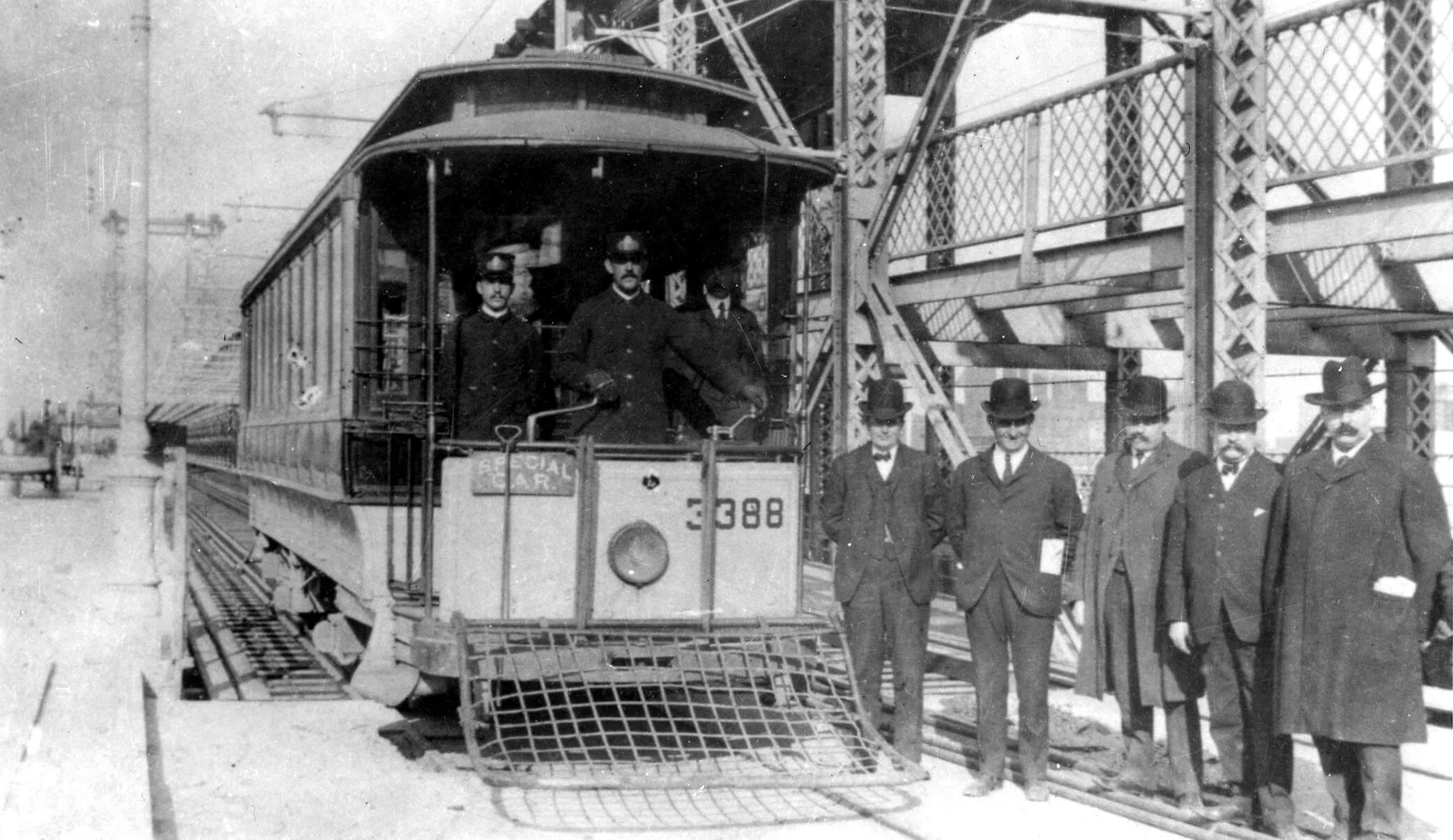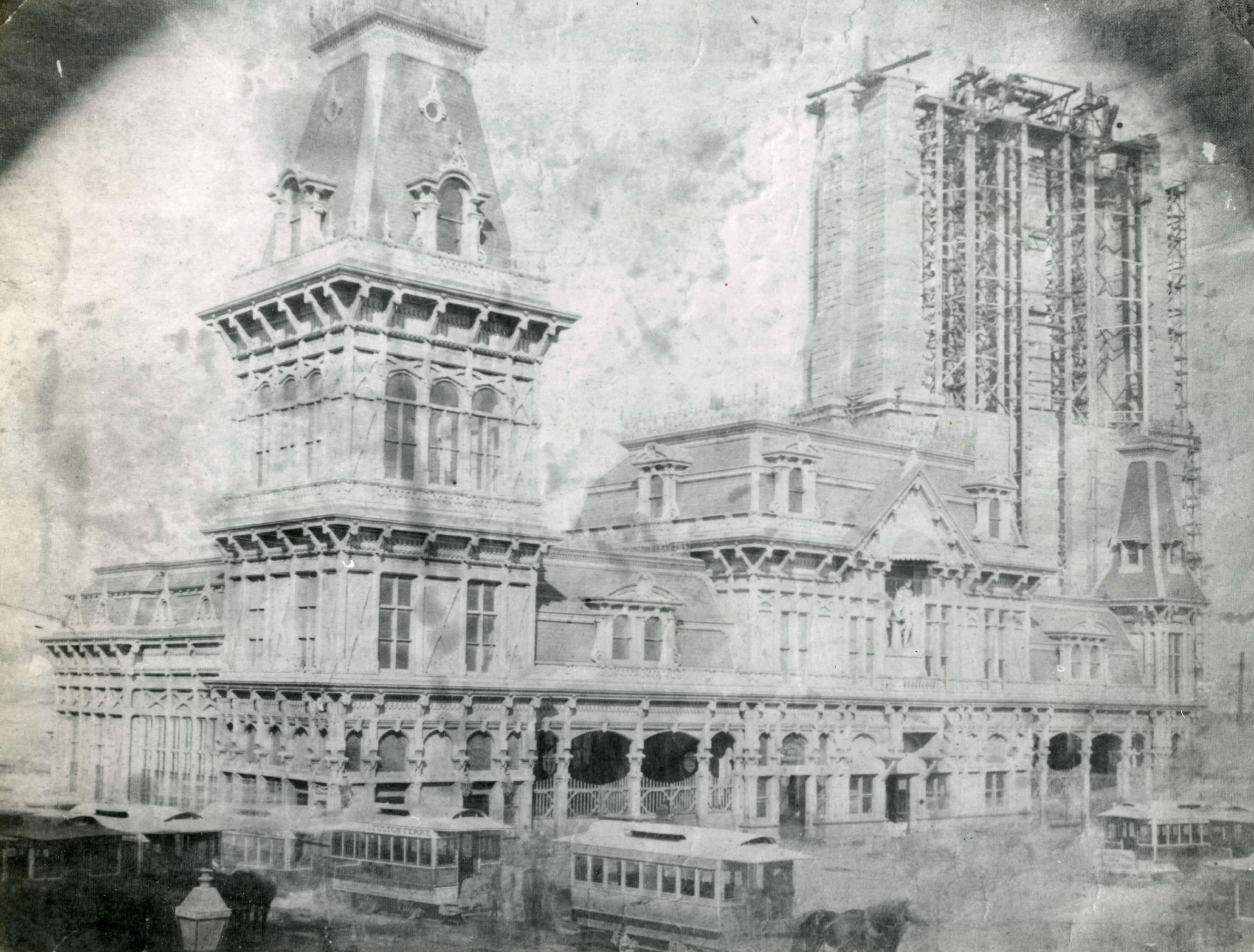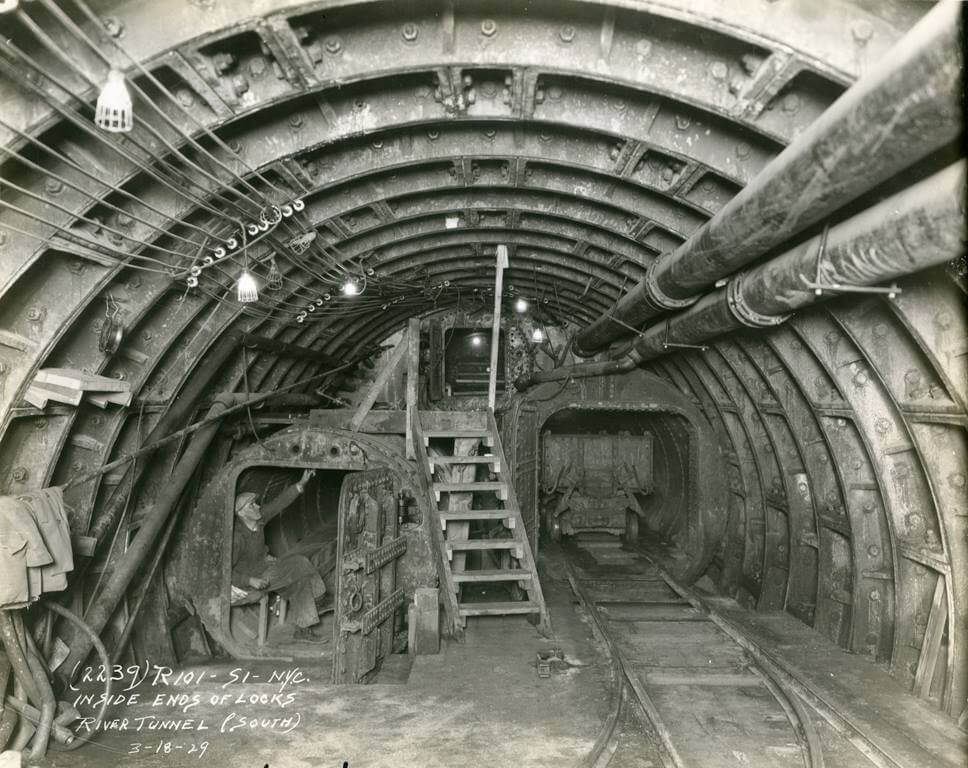From Ferry to Train: The Transit Transformation of Downtown Brooklyn Highlighted at New Exhibit
A new exhibit at the New York Transit Museum traces the influence of transit on the development of Downtown Brooklyn from the first ferry in 1642 to the present.

Fulton Ferry Ticket, 1844. Image via the New York Transit Museum, Manning Field Collection
The trip from Brooklyn to Manhattan in 1642 was nothing like it is today. When a commuter required service, he or she would blow a horn attached to a tree in what is now Dumbo.
A nearby farmer named Cornelis Dircksen would stop what he was doing and attend to his prospective customer. For roughly 6 cents, he would take the passenger across what is now the East River in his rowboat.
“From Fulton Ferry: Building Downtown Brooklyn” traces this moment as the beginning of the borough’s expansion. The exhibition, which includes archival photographs and objects from the museum’s extensive collection, is on view through spring 2018 at the New York Transit Museum in Downtown Brooklyn.

Brownstoner asked Robert Del Bagno, Senior Manager of Exhibitions at the New York Transit Museum, to tell us a bit more about the exhibition and the influence of transit on the growth of Brooklyn.
Why did you pick this topic?
We wanted to tell the story of our neighborhood — Downtown Brooklyn — where the Transit Museum is located. Downtown Brooklyn has its own unique story that goes back to the origins of people settling here. This is where Brooklyn began. It started with a ferry and grew from there.
As you were doing your research, did anything surprise you?
It was interesting to see that speculative real estate development has been a driving force in the way the city expanded from the very start. This goes all the way back to the earliest settlers and is still a driving force in the neighborhood today.

Are there any objects, photos or drawings in the exhibit that haven’t been seen recently?
Many of the images in the exhibition have not seen the light of day in years. Much of the material in the exhibition comes from the NYTM collection but we found things at the Brooklyn Museum, Brooklyn Historical Society, New York Public Library and Library of Congress among other places.
How did transit influence the growth of Downtown Brooklyn?
Transportation has influenced the growth of Brooklyn since the 1600s when regular ferry service began between Brooklyn and Manhattan. Roads were built to the ferry landing and businesses and residences were built along them. Horse drawn vehicles bought goods from the farms of Long Island to the markets of Manhattan along this route. The Long Island Railroad’s first route started at the Ferry Terminal in 1834. Later, electric trolley’s and elevated trains moved people around the rapidly developing neighborhood that surrounded the ferry.
The building of the Brooklyn Bridge spurred more development and shifted the commercial center further inland. When the subway finally reached Borough Hall in 1908 another wave of development took off. The skyscrapers built between 1918 and 1929 are now designated landmarks in the Borough Hall Skyscraper Historic District.

Why should someone come and see the exhibit?
Anyone interested in Brooklyn history and especially the story of how this neighborhood developed into the commercial center of the borough would be interested in the exhibit. Many people who live and work around here probably don’t know much about it and this neighborhood has had a fascinating history.
Also, people interested in urban planning and the future of transit-oriented development might find insight into how the success of public transportation in the past is influencing how we plan for the future.

Looking forward, what do you see as the future of transit in Brooklyn?
The population of Brooklyn is growing and for us to manage this in a sustainable way, public transportation will play a key role. Across Downtown Brooklyn skyscrapers are rising. These tall buildings are getting approval to build because of a 2004 upzoning of the neighborhood. Because the area has a vast subway network, it is better suited to handle a denser population.
Future development will be linked to transportation. Rail travel was viewed as a thing of the past in the early days of the age of the automobile but today the future of urban area will depend on public transportation to move the growing population. The recent revival of ferries is part of this rethinking of how we get around.
Additional reporting by Susan De Vries
Related Stories
- Take a Trip on the Myrtle Avenue El (Photos)
- Demolished, Abandoned or Repurposed: Remembering Brooklyn’s Lost Subway Stations
- Transformation of Downtown Brooklyn Continues With Opening of DeKalb Market Hall
Email tips@brownstoner.com with further comments, questions or tips. Follow Brownstoner on Twitter and Instagram, and like us on Facebook.





What's Your Take? Leave a Comment